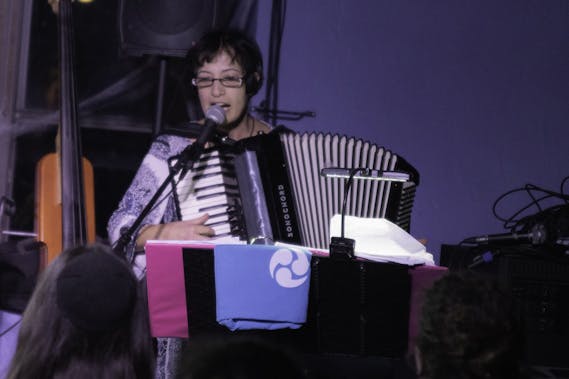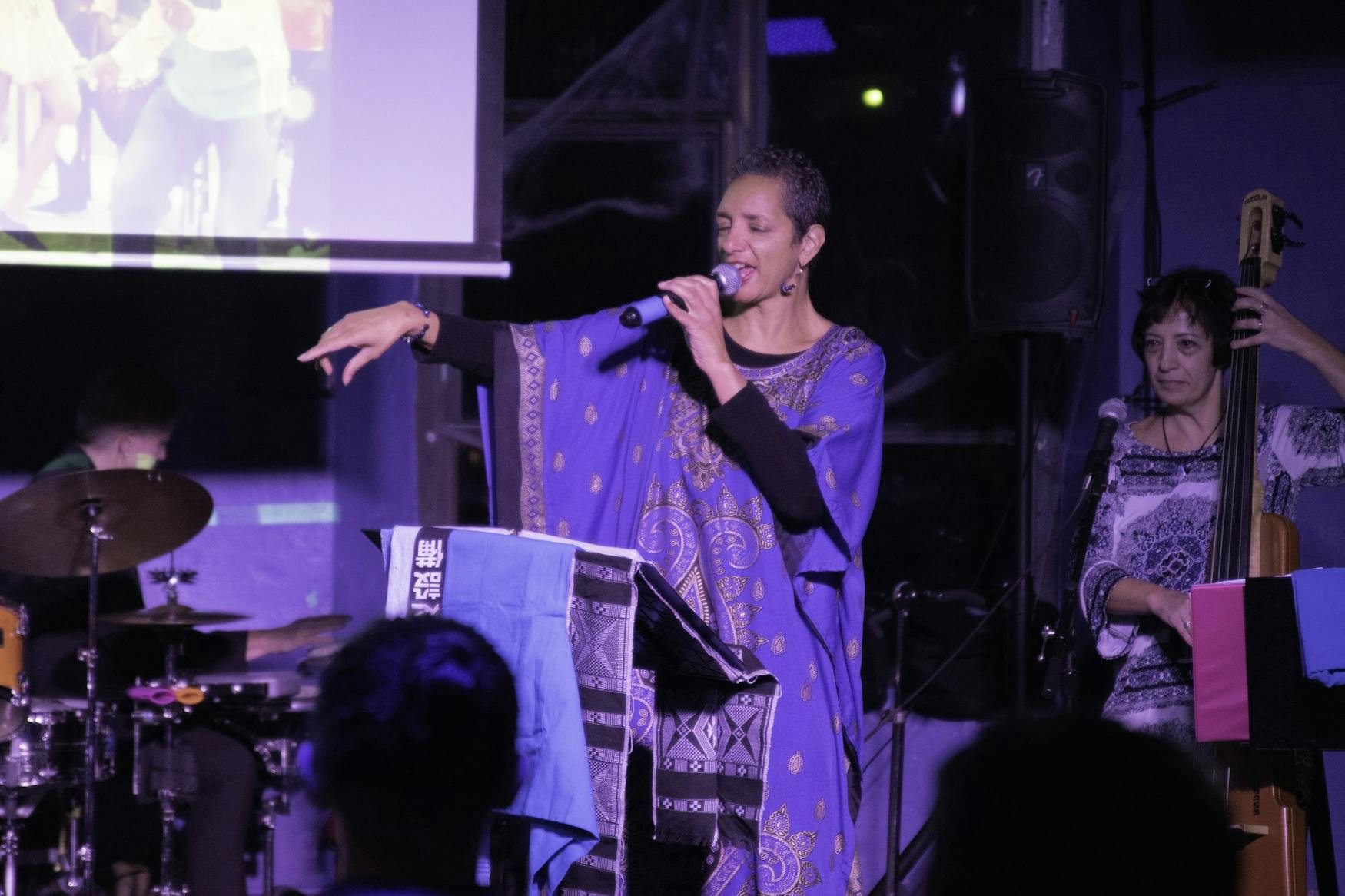Around the globe in two hours with Women in World Jazz
On Oct. 29, the Women in World Jazz troupe held an event at Cholmondeley’s Coffee House in collaboration with Brandeis’ Hebrew Program. The ensemble consists of five female musicians who travel around the New England area to celebrate and educate the public about different cultures and styles of music from around the world. The group specializies in world jazz, and during the performance, they paid tribute to female composers and vocalists from different eras and countries. The act was broken up into seven stops at some of those countries: Israel, Chile, Japan, South Africa, Cape Verde, Germany and Brazil. Throughout the performances, the members of the group often interacted with the audience by handing out instruments to play, as well as relics from the countries. This interactive and exciting event captivated both students and faculty members and, more importantly, helped showcase respective cultures and diversity on campus.

TRAVEL AROUND THE WORLD: The show was structured around “stops” in different countries, taking the audience on a tour around the world.
The first stop: South Africa. Candida Rose, the lead vocalist of the group, introduced this first section of their performance. The first song she sang was “Pata Pata” by Miriam Makeba, which was accompanied with a video of a traditional and popular South African dance. Rose’s compelling and beautiful voice captivated the audience members, and the song featured notes of jazz, Afropop and rhythm and blues. In addition, it was important for us to learn about the history of both the song and its composer, Miriam Makeba, who is credited with bringing the African music to Western audiences.

INSTRUMENTS AROUND THE WORLD: Ririka Tokushige has mastered a variety of instruments, both western and traditional Japanese.
The second stop: Israel. The leader of the group, Tal Shalom Kobi, a native of Israel, was the one who presented this next segment. Tal serves as the director of the group and plays the bass and accordion. She also provides vocals for the group. The song she covered, “Bashana Haba’a” by Nurit Hirsh, is a popular Hebrew song that has also been translated into seven different languages because of its reputation. The song is classified as gospel and pop and is also popular around the Jewish holidays. Kobi brought out her accordion in the middle of her song to perform a solo, which ended in roaring applause from the audience.
The third stop: Japan. Ririka Tokushige, a native of Japan, explained the history behind the next song: “Otemoyan” by Ine Nagata. This Japanese folk song is usually accompanied by Japanese instruments, such as the shamisen and taiko drums. Tokushige explained to the audience that these instruments are highly valued in music and in a more holistic sense with regard to Japanese history. Later on, Tokushige taught some Japanese words to the audience so that they could sing along to the song as well. The experience was both engaging and educational for the audience.

MUSICIANS AROUND THE WORLD: The Women in World Jazz troupe not only interacted a lot with the audience.
The fourth stop: Chile. Featuring “Gracias A La Vida” by Violeta Parra, Rose explained that the song was historically important to Chilean natives because it became a foundation for the social movement and musical genre Nueva Canción. The movement was often associated with revolutionary ideas: it called out human rights violations in Latin America and advocated for the progressive political movement of the New Left. Parra and her song demonstrated the influence that impacts the public in a sociopolitical way.
The fifth stop: Cape Verde. Kobi introduced the song from this country, “Dia C’Tchuva Bem” by Teté Alhinho. Cape Verde is a country off the west coast of Africa, which is famous for its scenic beaches and Creole Portugese-African culture. The style of music popular in Cape Verde is Morna, which incorporates the accordion, guitar and many other instruments. The music video playing in the background showed the people of Cape Verde who are seen smiling and dancing around the beaches and grassy fields of the island. It was a light, fun song that encouraged the audience members to get up on their feet and dance along to the beat.
The sixth stop: Germany. Christine Reif helped to introduce the next song, which was “Alles Was Ich Wuensche” by Loreena McKennit and Betinna Wegner. Christine is originally from Germany and explained that when this song first came out in 2001, it was a huge hit in her hometown. The song features rock and funk styles, and talks about a past love in a romantic and melancholic way. Christine was also accompanied by violinist and Brandeis student Joanna Marcus ’22. The pair executed the song perfectly and the message was well-communicated to the crowd, which felt moved by the performance.
At the end of the night, Kobi played her own piece, “Calypso of Hope,” which was co-written with her colleague, Deborah Rocha. The piece featured her skills as a bass player and was joined by her fellow colleagues who helped to end the event in high spirits. The crowd was seen dancing and shaking instruments that the members of the group had passed around. The show was a success, agreed by all. In an interview with The Justice, Morris Nadjar ’18 explained that the creation of this event, as well as his collaboration with Naomi Kielar (the coordinator for the Hebrew Program) occured because the “Hebrew Department has a lot of arts and culture that they want to share with the university, and so the event tonight can help to show a little bit of music, storytime and some good vibes.”
The collaboration between Women in World Jazz and Brandeis was a success in an effort to bring Brandeis students to experience and indulge in different styles of music, spearheaded by women from around the world. The ensemble brought a sense of community and togetherness to our campus that was well-received by all. I highly recommend that students should look out for the group’s upcoming events, listed on their Facebook page, and check them out for themselves.



Please note All comments are eligible for publication in The Justice.